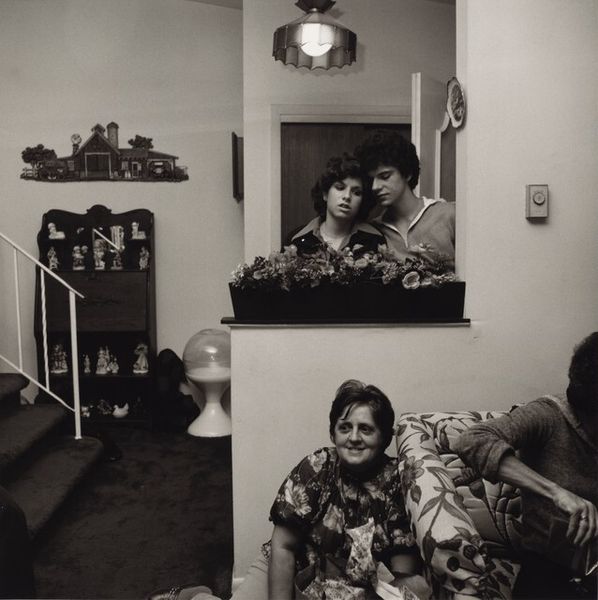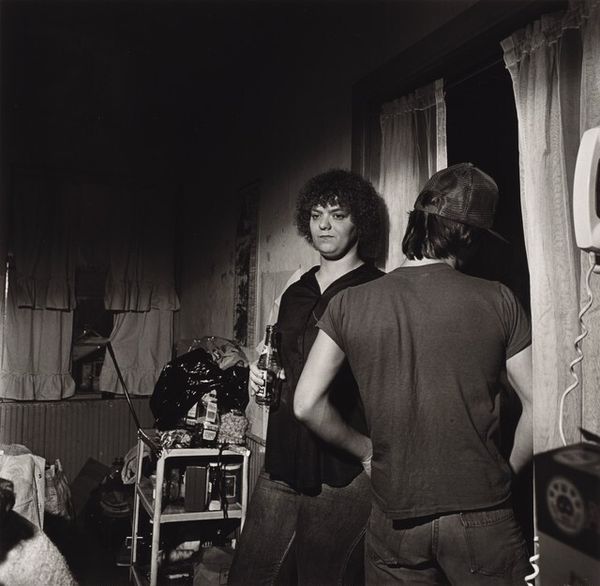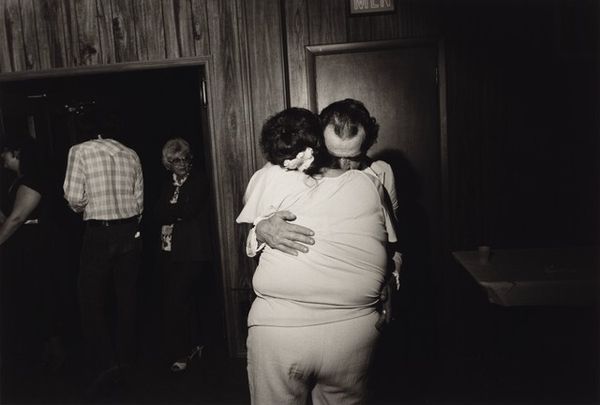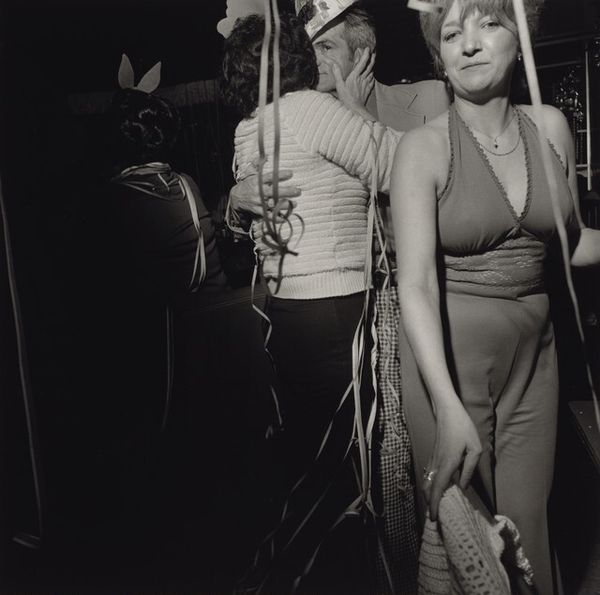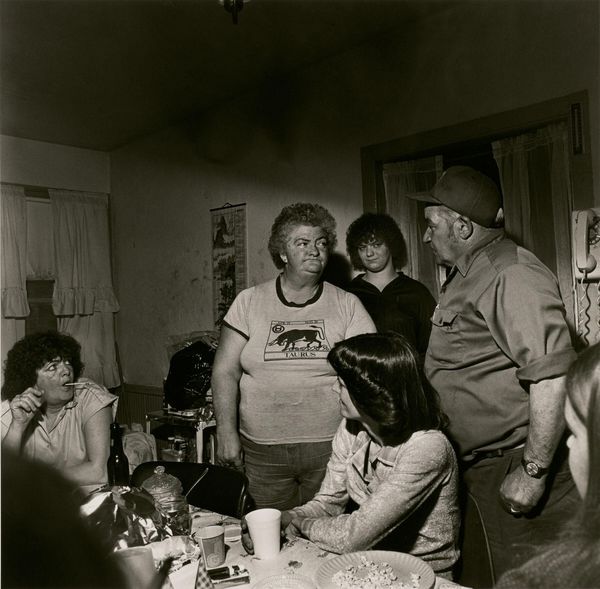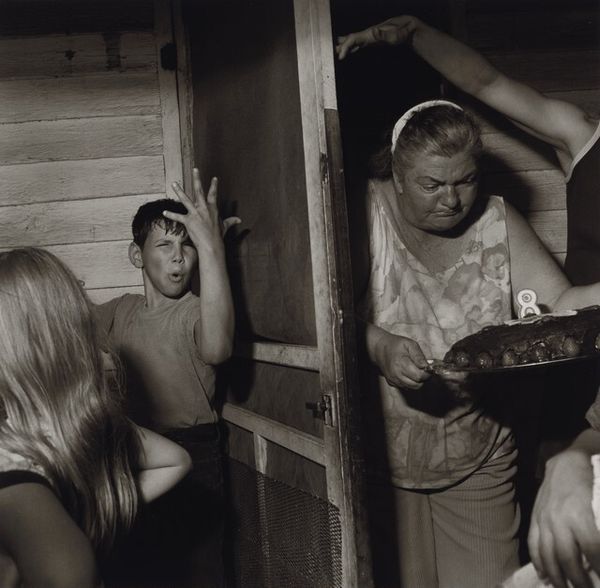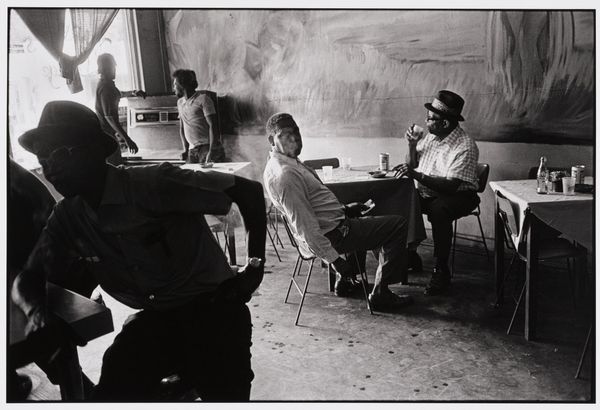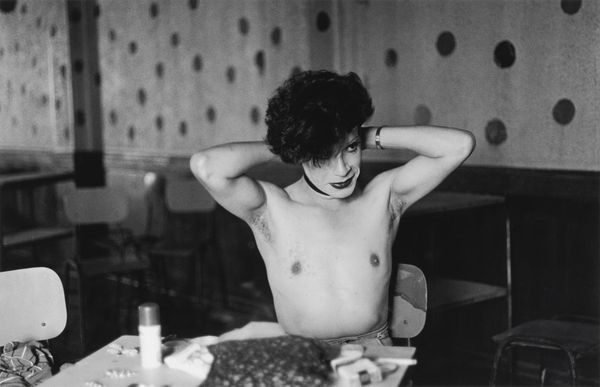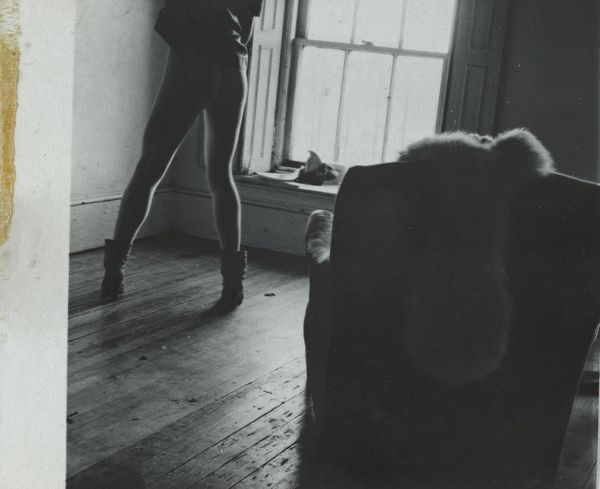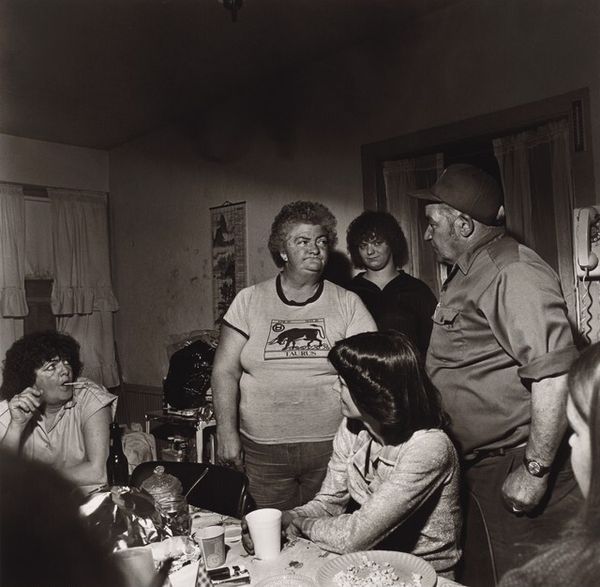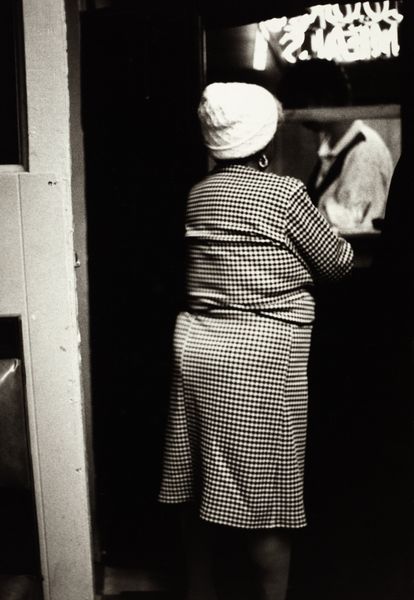
photography
#
portrait
#
photography
#
historical photography
#
black and white theme
#
photojournalism
#
cultural celebration
#
monochrome photography
#
genre-painting
#
film
#
realism
Dimensions: image: 35.4 × 35.5 cm (13 15/16 × 14 in.) sheet: 50.8 × 40.64 cm (20 × 16 in.)
Copyright: National Gallery of Art: CC0 1.0
Curator: Larry Fink's black and white photograph, "Oslin's Graduation Party, Martins Creek, Pennsylvania" made in 1977, is up next. What do you notice first? Editor: The raw, unfiltered intimacy. It feels like we're intruding on a private moment, almost uncomfortably so. The graininess adds to this sense of immediacy. Curator: Fink's known for capturing these kinds of seemingly candid moments. His approach challenges the conventional presentation of subjects. We should ask, what were his labor practices? This image is about people and materials intersecting at a certain place and time: the canned beer, patterned fabrics, exposed skin… Fink's working method becomes really interesting when we acknowledge those elements. Editor: Absolutely. The photograph functions as a powerful commentary on class, gender, and societal expectations. The woman’s expression, caught between affection and weariness, is especially compelling. It prompts a deeper exploration of gender roles and the emotional labor often placed upon women. What is happening between the embrace and being on public display? Curator: Exactly! The material elements work together to produce the final object, from the beer can right down to the photographic emulsion on the film. Consider how Fink made prints – was this printed by Fink himself, or an assistant? That contributes meaning to how we interpret its cultural value today. Editor: I agree that process is central. This photo also confronts the art world’s historical tendency to ignore working-class communities, instead fetishizing upper-class portraiture. What kind of critical lens can we use? The black-and-white tones feel both timeless and firmly rooted in the socio-economic realities of the late 70s. Curator: Perhaps even just seeing and analyzing Fink’s artistic decisions is already too polished a reading! The photo also reveals important details of its own making, which is a production practice that’s not about pure self-expression. This isn't only Fink expressing his view but capturing an extant cultural moment. Editor: Seeing "Oslin's Graduation Party" again, through our conversation about materiality, the art market, and the labor involved makes me appreciate how the image makes visible certain complex realities about celebration and daily life. Curator: Right, by understanding Fink’s photographic decisions, along with all those materials he brought into the scene, we see the way social interactions occur.
Comments
No comments
Be the first to comment and join the conversation on the ultimate creative platform.

